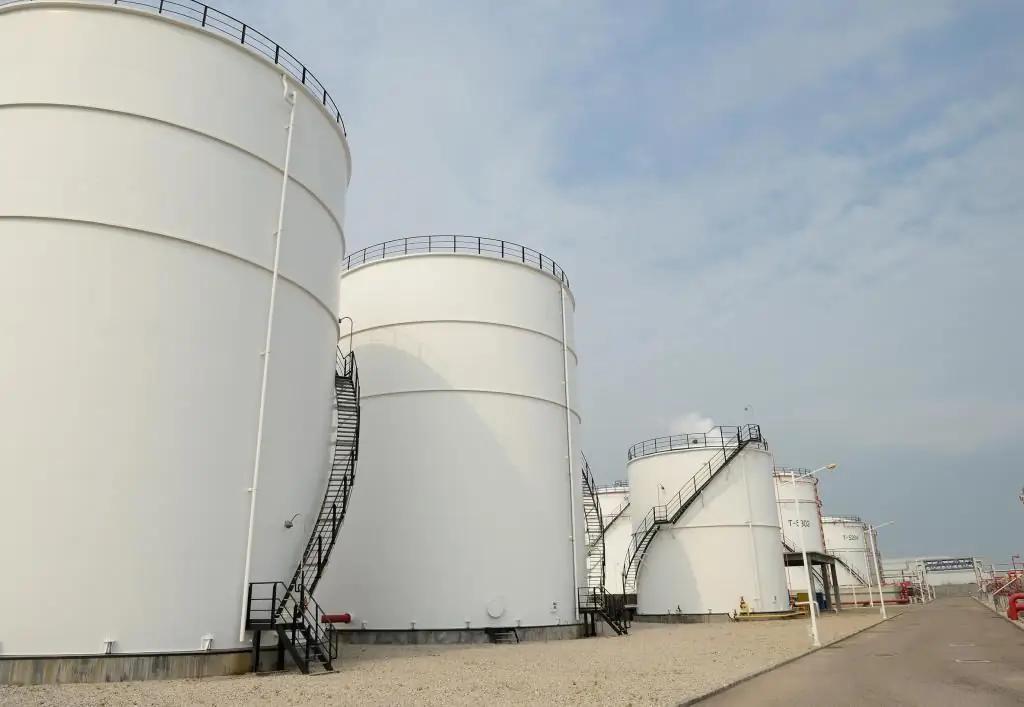2025 Author: Howard Calhoun | [email protected]. Last modified: 2025-01-24 13:10:30
The extraction of oil products is quite well developed today. To create a main oil pipeline, there are several mandatory conditions, among which is the creation of a tank farm. But what is it? In itself, such a park is a group of several separate tanks used to store oil, combined into one node.
General characteristics
Reservoir parks may vary in design and execution. It depends on several factors. One of the most important factors is the group of oil products that will be stored inside the tank. The second reason for the change in design is the volume of the stored product (both raw materials collected and shipped are taken into account). Despite this, all tank farms will be characterized by the fact that they are created to perform several of the following tasks:
- After collecting the tank, it is convenient to keep a record of all oil products.
- Naturally, intended for direct storage of products.
- In these tanksthe compounding process takes place. It must be carried out in accordance with all applicable standards, as well as in accordance with all rules for mixing different grades of petroleum products.

Who uses the most?
The main users of tank farms today are mining companies, complexes for pumping oil products, oil bases. All the enterprises that have been listed use tanks for storing hydrocarbons, but only after they pass the test, as required by the regulations.
On the territory of the Russian Federation, Spetsneftemash LLC is engaged in the production of high-quality equipment. All structural elements in the assembly are sealed, of high quality and meet all the requirements of the Russian and international standards that set the rules for such tanks.

Design rules
Oil tank farms are built according to several standards. This list includes the following documents: GOST 1510-84, GOST 30852.9-2002, SNiP 2.11.03-93.
These documents define both technical and material requirements that apply to the device. By following these rules, you can easily achieve the continuous operation of the oil tank farm.
If it is necessary to arrange the supply of oil products to a group of tanks by gravity, then for this you will have to look for an area with a flat terrain. However, when choosing a place, one should not forget about the fire safety rules that come to the fore when it comes to oil. According to one of the rules, containers for storing this substance should be installed in lowlands.

Design sequence
In order to create an operational and safe scheme for the tank farm of petroleum products, the development process should be carried out in accordance with a certain plan. This process itself is complex and takes place in several stages.
At the first stage, it is necessary to form a direct group of containers that will be designed for storage, transfer, shipment of both oil and oil products. At the same stage, it is additionally necessary to develop such systems as protective, automated. At the same time, a project is being introduced to connect pumping equipment for tanks and tank farms, if necessary.
At the second stage, it is necessary to design each of the tanks separately, as well as to add a communication device between these tanks to the project. When working with a project to create such a park, one should be guided by two more documents - the master plan of the mining facility itself and the installation plan.

Vertical tank type
There are quite a few different types of tanks that are used to store oil. The most common among all the rest were vertical steel tanks, brieflycalled RVS.
The device of these containers is quite simple. They are cylindrical vertical containers of the required height, which are welded from steel sheets, whose thickness is in the range from 10 to 25 mm. They are designed in such a way that the long side of each sheet is placed horizontally. A series of such sheets will be referred to as a tank belt. As for the roof, for a storage with a small volume, it will be based on trusses. If the volume is large, then the roof will rest on the B-pillar.
The bottom for such containers is welded, and it is installed on a sand cushion. In addition, it is designed in such a way that the bottom slope is from the center to the periphery. This is necessary in order to remove the bottom water as best as possible. As for the height of the vaults, it can be 9, 12 and even 18 meters. The diameter can be from 20 to 60 meters. Depending on these two parameters, of course, the total volume of the tank farm will also change.
Besides, the storage capacity will also depend on its purpose and can be 1, 3, 5, 10, 20, 50 thousand m3. In this case, the internal overpressure should not exceed 0.02 atm.

Other types of oil storage facilities
The general classification includes only 4 different groups of tanks:
- Above ground tank type. It is to this type that vertical steel tanks belong. Here you can add that inside them there can be special pontoons from differentmaterials. Their main purpose is to reduce oil loss during evaporation.
- Next comes the above-ground type of equipment, which is similar to above-ground equipment in terms of its execution and design.
- Semi-underground storage facilities are considered a separate category. The installation of such tanks takes place using a material such as concrete goods. If necessary, such a tank can be lined with a steel sheet from the inside.
- The last type is underground and underwater storage systems. The main and distinctive feature is that there are no evaporation losses, since the storage is located either under the water column or underground. Because of this, they are characterized by the greatest preservation of raw materials.
If we talk about volumes, the first three categories of the park are characterized by the fact that each individual storage can hold no more than 200 thousand cubic meters of oil or oil products.

Reservoir operation. Features
Further, it should be said that the work of the tank farm in the usual sense of the meaning of the word is absent. That is, the storages themselves do not perform any actions, they just store oil products. However, there is a certain set of additional equipment that the park is equipped with. Thanks to these devices, the containers become more "active".

Storage equipment
The following fixtures are used in the general storage kit:
- To fill and emptytanks, the intake and distribution pipes of the pipelines are used.
- There is a gauge hatch for level determination and sampling.
- Tank farms for oil and oil products are additionally equipped with level gauges for automatic measurement of the amount of a substance. The level gauges themselves are either ultrasonic or float type.
- Separately, it is worth highlighting a device called a breathing fuse. This fuse protects the tank from an excessive increase or decrease in pressure in the gas space. In addition, it plays an important role during the big "breaths" of the store, when it is filled or emptied. In such cases, the device reduces oil loss.
- A fire fuse is mandatory. It is intended to protect the interior from sparks and open flames.
- Siphon valve used to drain produced water.
- During the storage of oil, a precipitate will fall out, which is washed away using a special device.
- There is a special manhole at the bottom. It is intended to ventilate the interior of the tank before starting repair work.
Precautions
Because oil is a very dangerous substance, all equipment must be manufactured in such a way as to create a minimum risk of an accident. To do this, an enterprise engaged in the production of tanks for parks must attend to the installation of protection and protection. Tank protection must fulfill several basictasks:
- the security system should prevent the spread of oil products and the oil itself through the territory of the tank farm;
- prevention of product ignition;
- ensuring the protection of employees working at the oil depot from the effects of fire, poisoning.
Fire fighting. How to prevent trouble?
Naturally, the question of extinguishing tank farms is the most urgent. Firstly, all structures of this type are necessarily equipped with a fire extinguishing system. It notifies you of a fire, a leak, or another emergency. When such a signal is received at the control room, a fire brigade immediately leaves for the place. All firefighting work in tank farms is the responsibility of a separate employee who holds the position of the head of this task. The fire brigade must also arrive at the scene of the accident within 1 hour of receiving a signal from the protective system.
Ways to extinguish a fire
On such objects, two methods of extinguishing fire are used - subsurface and surface. What unites these two methods is that both will use foam-type fire extinguishers. They reduce the temperature of the substance, do not allow the fire to spread beyond the source of ignition.
The supply of fire extinguishing agent must necessarily exceed the volume that is designed to extinguish the fire within 15 minutes. In addition, the allowable multiplicity of these substances should be medium or low. It is required to use foam fire extinguishers also because the foam is capable of forming on the surfaceoil film that reduces or prevents the release of combustible vapors during a fire.
It is worth saying that the underlayer method of extinguishing a fire is most common. It involves the use of a fire extinguishing system of a stationary type or with an elastic sleeve. In this case, the fire extinguishing agent will be directed directly into the layers of oil products. In addition, the main advantage of this method is the absence of danger for the foam generators themselves.
Recommended:
Classification of engines. Types of engines, their purpose, device and principle of operation
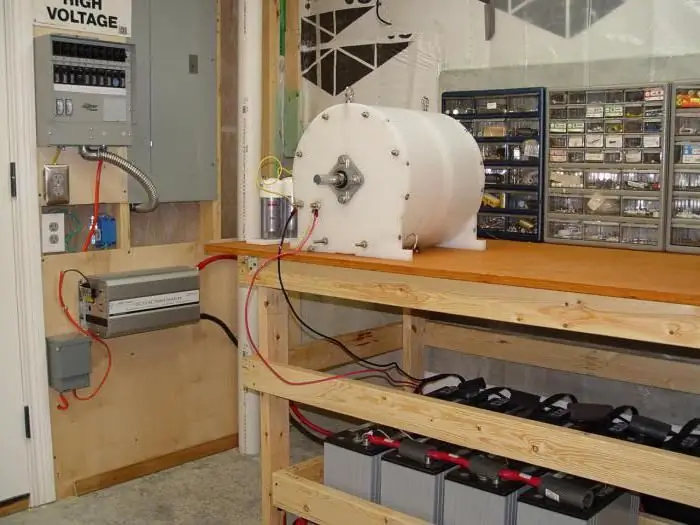
Nowadays, most vehicles are powered by an engine. The classification of this device is huge and includes a large number of different types of engines
Electric locomotive 2ES6: history of creation, description with photo, main characteristics, principle of operation, features of operation and repair

Today, communication between different cities, passenger transportation, delivery of goods is carried out in a variety of ways. One of these ways was the railroad. Electric locomotive 2ES6 is one of the types of transport that is currently actively used
Reservoir breathing valve: purpose, device, principle of operation, verification
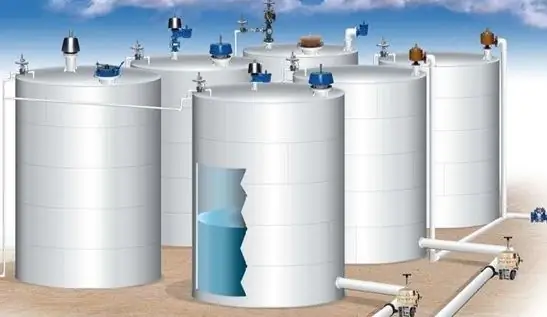
Oil refineries and technological complexes using oil and gas products contain a system of pipelines for servicing fuel materials in their working infrastructure. Maintaining sufficient performance in the circulation circuits of the same oil requires the use of special plumbing fittings. Its key element is the reservoir breather valve, through which the pressure is regulated
Low pressure heaters: definition, principle of operation, technical characteristics, classification, design, operation features, application in industry
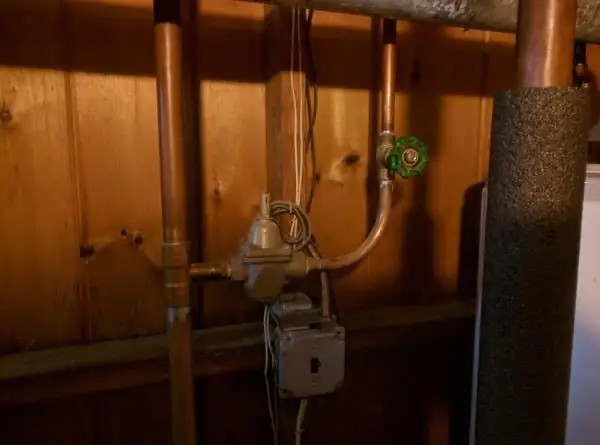
Low pressure heaters (LPH) are currently used quite actively. There are two main types that are produced by different assembly plants. Naturally, they also differ in their performance characteristics
Gas piston power plant: the principle of operation. Operation and maintenance of gas piston power plants
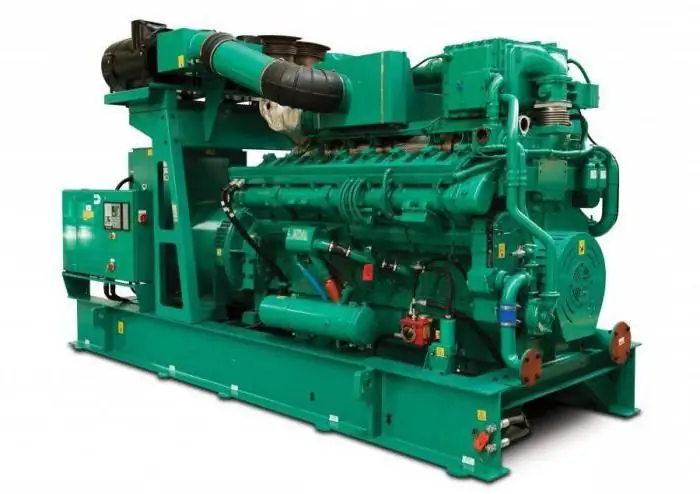
Gas piston power plant is used as a main or backup source of energy. The device requires access to any type of combustible gas to operate. Many GPES models can additionally generate heat for heating and cold for ventilation systems, warehouses, industrial facilities

